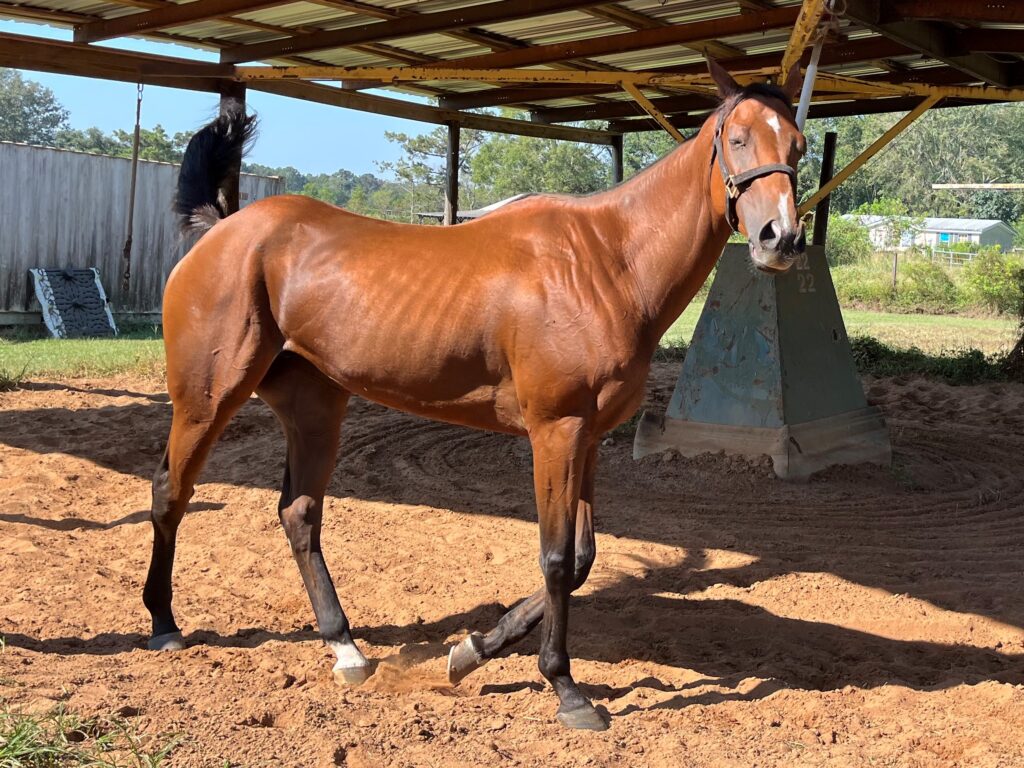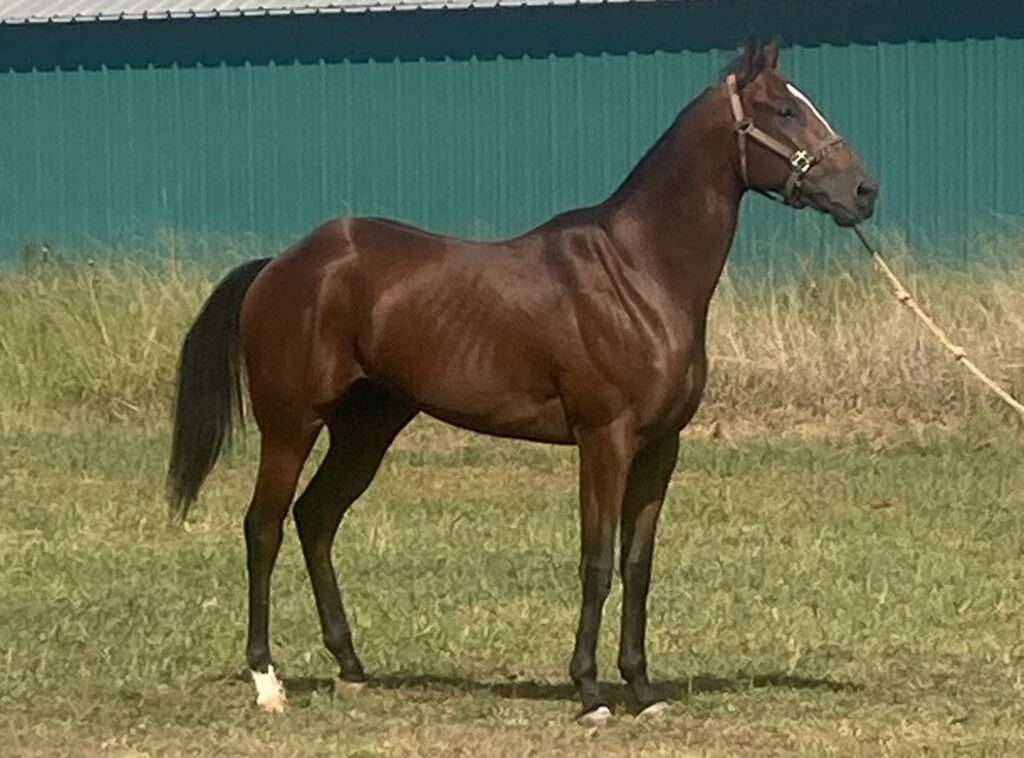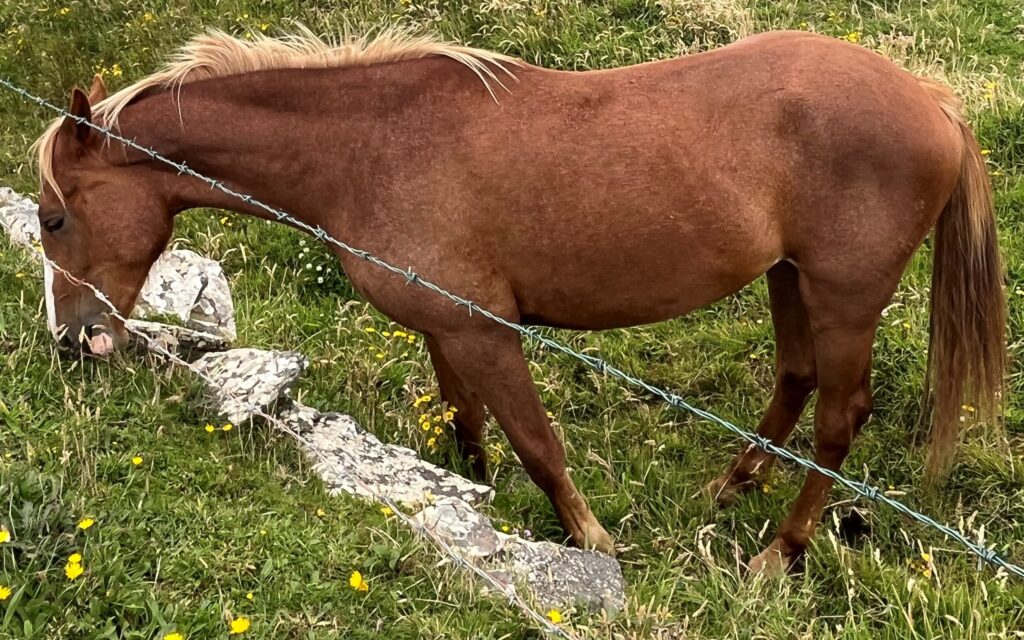Last updated: March 22, 2024
While watching horses on a walker, I initially thought they were all bays due to their reddish-brown coats. However, a closer look revealed that one horse maintained a consistent copper shade all the way down its legs, sparking my curiosity about whether it was a bay or a chestnut.
Bay and chestnut horses can appear quite similar, both exhibiting reddish-brown coats, but a key difference lies in the black points exclusive to bay horses. These black points refer to specific areas such as the ears, mane, tail, and lower legs. Chestnut horses, on the other hand, lack any black hair, presenting a uniform coloration across their body.


For horse enthusiasts and professionals alike, understanding these differences is crucial. It aids in accurate horse identification, which is essential for breeding, competition, and general horse care. This blog post aims to unravel the intricacies of distinguishing between bay and chestnut horses, providing insights into their genetics and unique characteristics.
Bay or Chestnut Horse: How to Distinguish
Distinguishing between bay and chestnut horses can be done by observing their unique coat color characteristics. Here are the key differences to help you identify each horse type:
- Coat Color: Both bay and chestnut horses have a reddish-brown base coat, but the shades can vary widely. Bay horses generally exhibit a darker reddish-brown hue, ranging from light brown to a rich mahogany color. Chestnut horses, on the other hand, display a lighter and more uniform reddish-brown coat that can range from a pale sorrel to a deep, dark liver chestnut.
- Mane and Tail: One of the most distinct differences between bay and chestnut horses is the color of their manes and tails. Bay horses have black manes and tails, while chestnut horses possess manes and tails that match their coat color or are slightly lighter or darker. Notably, chestnut horses do not have any black hair, which is a key characteristic that sets them apart from bay horses.
- Points: “Points” refer to the markings found on the ears, lower legs, and tail of a horse. Bay horses have black points, which create a stark contrast against their reddish-brown coat. Chestnut horses, however, do not exhibit black points; their markings are typically the same color as their coat or a closely related shade.
By closely observing a horse’s coat color, mane, and tail color, and the presence or absence of black points, you can distinguish between bay and chestnut horses. Becoming familiar with these key characteristics, especially the fact that chestnut horses have no black hair, will make it easier for you to identify each horse type at a glance.

Features of a Bay Horse.
Bay horses are typically characterized by their copper-tone coats combined with black skin, black points, and dark eyes. The shades of bay horses vary from light brown to dark red. They are among the most common horse colors and are found in various breeds, including the American Quarter Horse, the Arabian, and the Thoroughbred.
Genetics of a Bay Horse
Many people believe that bay is a base equine color, while others think there are only two black and chestnut, and that bay is a variation of black. To create a bay coat, there must be a specific combination of genes, including the E allele and agouti. These genes are dependent on each other to produce a bay horse.
All bay horses have at least one E allele gene.
Horses have three base coat colors: chestnut, bay, and black. The E gene and the A gene control these colors. Black pigments are expressed genetically by “E.” Bay horses have at least one E allele gene, which can be either E/E or E/e.
In horses, the bay gene is dominant over black, and it is expressed by either E/Aa or E/AA. All bay horses have a minimum of one gene that causes the production of black pigments. Another gene that plays a significant role in bay horses is the agouti.
The agouti gene directs black pigments in bay horses.
The agouti directs the distribution of black pigments. Dominant agouti (“A“) results in the black base color “E” restricted to the points of the horse. The horses’ legs, mane, tail, and ear tips are points.
This genetic combination results in a standard bay-colored horse with a reddish body with black points. The agouti gene has limited ability and only directs black pigments; therefore, chestnut horses are immune from its influence.

There are many different variations of bay horses.
Bay horses are some of the most popular horses around, and it’s no wonder why. Their striking coat color comes in a wide range of shades, from a rich golden hue to deep chocolate brown.
While the bay color is determined by genetics, a few things can affect its shade. For example, bay horses that are poorly nourished may have a duller coat, while those that are well-groomed may have a richer color.
The more common bay colors are listed below:
- Standard Bay
- Sandy Bay
- Bay Dun
- Bay roan
- Blood Bay
- Amber Champaign Bay
- Silver Bay
- Bay Pinto
- Bay Leopard
- Mahogany Bay
- Wild Bay

Characteristics of a Chestnut Horse.
Chestnut horses come in all sorts of different shades, from light honey to red, so dark it’s almost black. One thing these equines have in common is their lack of black hair- a coat pattern created by genes that suppress black pigments.
However, like bays, chestnut horses typically have black skin. However, some chestnut foals are born with light skin that darkens. Chestnut horses are true-breeding, so if you breed two chestnut horses, they will always produce a chestnut foal.
If the colt is any color other than chestnut, then one of the parents wasn’t a chestnut. However, both parents don’t have to be chestnuts to produce a chestnut foal.
The chestnut coat color has an extensive range of shades, some as light as a palomino to so dark they appear black. Their points (manes, tails, ears, and lower legs) may be darker or lighter than their bodies.
Chestnut horses are genetically identified as Genotypes E e E e A A A ‐ or E e E e A a A a. In other words, EeEe results in chestnut horses regardless of the other influencing genes.

Genetic Testing to Determine Horse Coat Color
At times, figuring out your horse’s coat color can prove challenging; however, there’s no need to worry. Genetic testing provides a dependable and precise approach to determining a horse’s coat color. By examining particular genes, you can identify not only the base color but also any existing patterns and dilutions. Here’s an overview of how genetic testing can effectively establish a horse’s color:
- DNA Collection: A DNA sample is typically collected using a hair or blood sample from the horse. For hair samples, it is crucial to include the hair roots, as they contain the necessary genetic material for analysis.
- Testing for Base Color: Genetic testing primarily focuses on two primary genes – Extension (E) and Agouti (A) – to determine the base color of a horse. The Extension gene controls the presence or absence of black pigment, while the Agouti gene regulates the distribution of black pigment in the coat. Analyzing these genes can help distinguish between bay, chestnut, and black horses.
- Identifying Dilution Genes: In addition to the base color, genetic testing can detect the presence of dilution genes, which can modify the intensity of the coat color. Examples of dilution genes include the Cream gene (CR), the Dun gene (D), and the Silver gene (Z). These genes can create variations such as palomino, buckskin, or smoky black, among others.
- Detecting White Patterns: Genetic testing can also identify genes responsible for white markings and patterns, such as Tobiano, Overo, and Sabino. These genes influence the distribution of white hair on a horse’s coat, contributing to the horse’s overall appearance.
By utilizing genetic testing, you can obtain precise information about a horse’s coat color and any additional patterns or dilutions present. This method offers a scientific approach to understanding a horse’s color genetics, which can be particularly valuable for breeding purposes and accurate identification.

Conclusion: Differences between Bay and Chestnut Horses
I hope this guide clearly outlines the key distinctions between bay and chestnut horses and enhances your confidence in identifying each. Note: bay horses are easily recognizable by their reddish-brown coats, black points on the ears, mane, tail, and lower legs, while chestnut horses feature a consistent reddish hue throughout.
Grasping these differences not only answers your initial query but also enriches your equestrian knowledge as a whole. Thank you for choosing this article as your go-to resource, and we hope it serves you well in all your future interactions with these magnificent animals.
Below is a helpful YouTube video that explains the basics of horse coat colors.
FAQs
What makes a horse a bay?
Black points are the distinguishing feature of a bay horse. A horse’s points are its lower legs, mane, tail, and ear tips.
What color horse was Secretariat?
Secretariat was a big chestnut thoroughbred stallion. He had such a distinctive red color that his nickname was “Big Red.”
What are chestnuts on horses?
The rough substance found on the inner knee and hock of horses’ legs is called chestnuts. They are thought to be the remains of horse toes.
Have you distinguished between the two horse colors yet? Share your views with us!

About the Author: Miles Henry
Lifelong Horseman | Racehorse Owner | Published Author
Miles Henry brings over 25 years of hands-on experience training and owning Thoroughbred racehorses. Raised with Quarter Horses and Appaloosas, he’s spent a lifetime learning from horses—on the track, in the barn, and in the field. Today, he runs a small but successful racing stable in Louisiana and shares real-world insights on HorseRacingSense.com, helping horse owners, fans, and bettors navigate the sport with confidence.
📚 Books: View Miles’s books on Amazon »
🎧 Podcast Guest: Animal Tales Ep. 32 |
YouTube Interview
📩 Newsletter: Sign up for racing tips and horse care advice »
🔗 Follow Miles:
Twitter |
Facebook |
YouTube


